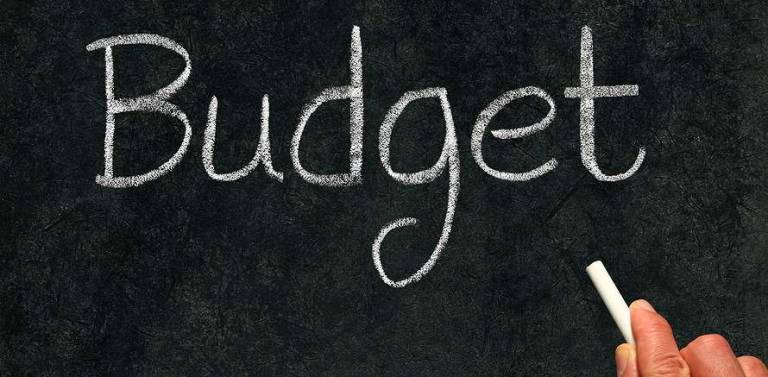Warwick school board offers preview of 2014-15 budget

By Abby Wolf
WARWICK — As another budget vote looms, the Warwick Valley school District finds itself on the horns of a dilemma: How to save the programs that the voters have deemed essential, while not exceeding New York State’s tax levy limit?
Assistant Superintendent for Business Timothy Holmes laid out the case before the school board on Monday night, at a combined special meeting and work session.
According to Holmes’ presentation, Warwick school budgets have grown by an average of 1.38 per cent a year since 2010–11, despite increases in unfunded mandates and declines in state aid.
Since 2009 10, the district has not received a total of $16.6 million from Albany, as a result of the Gap Elimination Adjustment (this was originally supposed to be a one-year fix under former Gov. David Paterson, in hopes of balancing New York state’s budget, but has become an annual subtraction of state aid to schools).
Noting that he’s “disappointed, angered, frustrated,” by Albany’s failure to restore its aid cuts, Superintendent of Schools Dr. Ray Bryant added: “When you borrow money from children, you pay it back.”
Holmes reviewed district budgets since 2010, ranging from $78,559,350, through the one proposed for 2014–15, at $85,862,405.
The overwhelming majority of revenue for the proposed budget – 69 per cent – comes from taxes of $57,668,578.
The next largest source of revenue, or $22,525,112, comes from state aid.
The remainder, at 2 per cent each, comes from the district’s appropriated fund balance and non-tax revenue sources, at $2.2 million and about $1.6 million, respectively.
Community values education
When the district surveyed the community last year to determine its budget priorities, a majority of the more than 1,000 respondents (nearly 50 percent) said that their top priority is “to preserve programs and opportunities for students to the greatest extent possible.”
The items deemed "essential" to the survey respondents:
Attracting and retaining high-quality teachers
Honors and AP courses
Maintaining small class size
Full-day kindergarten
The latest technology
Courses in stem (science, technology, engineering and math)
College-credit courses at the high school
School band and strings
Controlling costs so far
Some of the ways the district has tried to control its costs: Co-operative purchasing; teacher contract renegotiation; refinancing its debt; changing from a three-tier to a two-tier busing system; re-districting; increased walking distances; reducing staff by 84; closing Pine Island and Kings Elementary schools; accepting tuition-paying students from Greenwood Lake; among others.
In the latter case, 40 GWL students at $8,000 each, has brought $320,000 to the district.
The district has also rented out the former Pine Island and Kings elementary schools, at $20,800 and $263,000 respectively.
Pension obligations for retired teachers and staff are a main driver of increased costs that are beyond the district’s control: Holmes’ presentation showed annual increases from 2011-12 through the projected 2014–15 budget (costs are expected to be 20.4 per cent and 17.53 per cent higher for 2014–15 for ERS and TRS, respectively).
Proposed staff, administrative cuts
By eliminating the directors of technology and instructional services, the district could realize a savings of $398,699; doing away with a secretary and a half-time mechanic would save about $85,0000.
By eliminating nine teaching positions – 2 elementary; 1 business; 5 at the middle school (including Special Ed., PE, art and music); and 1 high school Special Education – the district would stand to save approximately $2.3 million, in terms of both salary and benefits.
Holmes suggested that making the following cuts – though difficult – would potentially save the district nearly $1.3 million: 2 elementary media center positions; 2 AIS (academic intervention services); 2 counselors; 1 high school science teacher; 1 foreign language teacher; 2 band and strings.
Closing the gap
Bryant told the board that the district should discuss revisiting some of the teachers’ contracts with the unions, and perhaps even approach the voters about going above the 1.73 per cent tax levy, as a way of maintaining programs that voters value.
He added that the board has “been fiscally responsible” thus far, and has made difficult decisions, while being mindful of the district’s priorities.
A majority of 50 percent, plus 1, would be needed to pass a budget with a greater than 1.73 per cent increase.
If the budget doesn’t pass the first time, the school board must adopt the existing budget, with no increases.
Other business
The board voted to change the Pine Island polling location from the former elementary school building to the firehouse.
Next
April 14, 7 p.m. Potential budget work session, Dorothy C. Wilson Center
April 21, 7 p.m. Special meeting for public hearing and budget adoption, Dorothy C. Wilson Center
May 12, 7 p.m. Budget hearing
Budget vote: May 20, :7 am to 9 p.m.